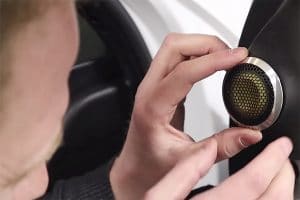
Well-produced music of any genre should sound better than adequate when played through decent speakers, at a reasonable volume, with a neutral EQ. A reduction of volume will lead to a more balanced frequency spectrum. The main reason for this is that an excess of volume can lead to distortion fairly quickly, especially on lower-quality speakers. As a tip, it’s always better to cut frequencies that are too dominant rather than boost frequencies that are lacking. If you think something sounds off, even if only to you, then you can (and should) start adjusting.

The physiology of your ears, the quality of the speakers you’re listening on, and the production values of the audio recording itself. Of course, how good this sounds to you can depend on many factors. That means keeping the bass, mids, and treble around the middle of their respective Hz range. While there can be no definitive answer to this question, there are some guidelines to follow that will ensure your speakers are putting out the most optimally-equalized sound possible.įor general listening, it is widely agreed upon that a relatively neutral setting for your EQ is best. What Are the ‘Best’ EQ Settings for Bass and Treble? General Listening They also give you direct adjustment of treble (2,500Hz to 20,000Hz), mids (250Hz to 2,500Hz), and bass (60Hz – 250Hz) frequencies.įor this article, we’ll focus mainly on bass and treble, as these are the frequencies that can shape the audio output of your speakers the most. If the idea of balancing frequencies across an audible spectrum of 20Hz to 20,000Hz sounds a bit daunting, then you’re not alone.ĮQ controls and filters are made for this reason, allowing you to choose from a range of presets created by professionals. This allows us to boost certain aspects and cut others, effectively manipulating the sound so that when it reaches our ears, it sounds as satisfactory as possible. When we talk about adjusting the EQ, what we’re actually doing is adjusting the volume of a frequency (or frequencies) on the audio spectrum. Genre-Specific EQ Adjustments for Car Speakers.Bass and Treble Settings for Car Speakers.What Are the ‘Best’ EQ Settings for Bass and Treble?.OP, set your EQ to what actually sounds good to you, not just whichever setting has the most bass. That’s not exciting to me, I want to hear what is going on in the track, not what it sounds like with huge low and high boosts and huge mid scoops. You said it yourself, it sounds ‘exciting’ but you can’t actually hear it properly. So I’ll mix my music so it also sounds best on a flat EQ setting and not compromise so some clueless people don’t get their heads blown off with bass energy.įor example, your wife’s EQ setting. I’m not going to go back to the studio and lower my bass a few dB so it sounds a little tamer when Karen cranks the bass in her 2022 leased VW golf.įor my own tastes, every single car I’ve owned or been a passenger in, the EQ is always best on flat. If I make a killer mix that sounds great on all systems except on a car system where the bass has been inflated 14dB at 80hZ, I’ve done a good job. There’s no way in hell I’m trying to balance my mix between what actually sounds good, and what it sounds like with the bass pumped up 14dB at 80hZ because some dummy may possibly do that at some point. But stokes for folks and all that! Good luck! I’d rather know about that stuff, than have essentially a crappy 2nd set of studio monitors, and learn nothing new. If I can just barely bear them in my crispy-cranked car, then they are perfect. More Treble is great for S’s particularly, because tweeters are often aimed directly at your face, and are tight & centered in some harshest, most unpleasing spot-somewhere 3-6k I’d wager. Which in turn, is conservative compared to my sister, and many of my metalhead friends: bass goes 10? then bass goes 10.
/GettyImages-123523284-5804eb563df78cbc2880cc8c.jpg)
If your low end is okay set flat, what will 14dB at 80hz do to your mix? Because that’s what Bass at only 6/10 does in my 2017 Hyundai Tuscon. And unsurprisingly, it always sounds very exciting in our car: the doors rattle, I can’t hear a guitar worth a damn, but those high hats are crisper than chicken. She listens to way more pop music than I do. Out of 10: Bass is at 6, Mids at 2, Treble at 4.


 0 kommentar(er)
0 kommentar(er)
